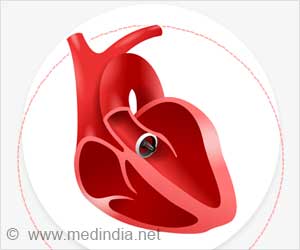Malfunctioning of the individual heart cells’ electrical activity may be now monitored using ‘pop-up’ electronic sensors.

‘Malfunctioning of the individual heart cells’ electrical activity may be now monitored using a first newly developed powerful ‘pop-up’ electronic sensor.’





This allows for a direct measure of the movement and speed of electrical signals traveling within the 3D tissues of a single heart cell. The device may help the scientists to gain precise insights into heart disorders and diseases like heart attack, arrhythmia (abnormal heart rhythm), and cardiac fibrosis (stiffening or thickening of heart tissue).
“With this device, we can zoom in to the cellular level and get a very high resolution picture of what’s going on in the heart; we can see which cells are malfunctioning, which parts are not synchronized with the others, and pinpoint where the signal is weak. This information could be used to help inform clinicians and enable them to make better diagnoses,” says senior author Sheng Xu, a professor of nanoengineering at the UC San Diego Jacobs School of Engineering.
Source-Medindia













